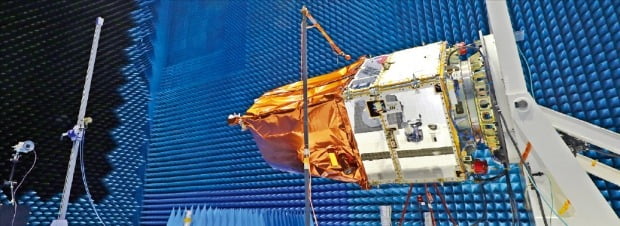
‘Next-generation medium-sized satellite 1’scheduled to be launched in Kazakhstan in March
The Korean launch vehicle’Nuri (KSLV-II)’ developed with domestic technology and the next-generation mid-size satellite 1 will be launched this year. The development of lunar orbiters and landing ships will also continue. The Ministry of Science, ICT and ICT announced on the 8th that it had held the Space Development Promotion Working Committee jointly with relevant ministries and confirmed the ‘2021 Space Development Promotion Implementation Plan’. The gist of this plan is to continue the development of launch vehicles and satellites by investing a total of 615 billion won and to grow the private space industry ecosystem.
◆4 10kg nano-satellites launched
The most important schedule this year is the launch of the Nuri, scheduled for October. The development of the Nuri is a project that has continued since 2010 in order to secure its own space transport capacity capable of raising a 1.5kg-class satellite in low orbit 600~800km. The government allocated a budget of 187.9 billion won for the launch of the Nuri this year. Based on this, the goal is to complete all preparations for launch, such as completing the comprehensive combustion test of the first-stage engine and conducting final inspections.

Satellite development projects used for observation and communication will also continue. Next-generation medium-sized satellite unit 1 will be launched in Kazakhstan next month. The satellite, which has been developed since 2015, is used for ground observation and mapping. This year, the government is also starting to develop the geostationary orbit public multi-communication satellite,’Cheonrian 3′. The satellite’s mission is to monitor flood disasters, support maritime activities, and support emergency communications in disaster areas.
The government has allocated 56.2 billion won this year to the space exploration field. It plans to launch 4 10kg-class nanosatellites led by the Astronomical Research Institute in the second half of this year. Nanosatellites observe the space environment relatively close to Earth, such as magnetic fields, at an altitude of 500km orbit.
It also continues to work to explore distant space beyond low orbit. The lunar orbiter is expected to launch next year. A total assembly test for this will be held this year. The government is also investing in the development of the lunar lander, which is being pursued with the goal of 2030.
◆Laying the foundation for’New Space’
This year, the development of the Korean Satellite Navigation System (KPS), which will replace the US satellite navigation system (GPS), is also expected to begin. This project is undergoing a preliminary feasibility study. It is a project implemented to provide a location information system with higher accuracy than GPS developed for military use. The government believes that KPS is essential for the use of autonomous vehicles and drones.
The government is also working hard to lay the foundation for the’New Space’ to lead the space development by the private sector. The’Space Pioneer’ project that helps companies-led space research and development (R&D) is promoted for the first time this year. The government selected 10 projects this year and provided 7.7 billion won, and a total of 2115 billion won by 2028 will be invested.
Reporter Choi Han-jong [email protected]
Ⓒ Hankyung.com prohibits unauthorized reproduction and redistribution
